Sega Wat (Spicy Ethiopian Beef Stew)
This post may contain affiliate links. See my disclosure policy.
A thoroughly delicious Sega Wat recipe, the famous Ethiopian beef stew! This spicy beef stew is one of Ethiopia’s most famous and beloved dishes. The depth and complexity of flavor is incredible and this recipe rivals the very best restaurant versions you’ve had!
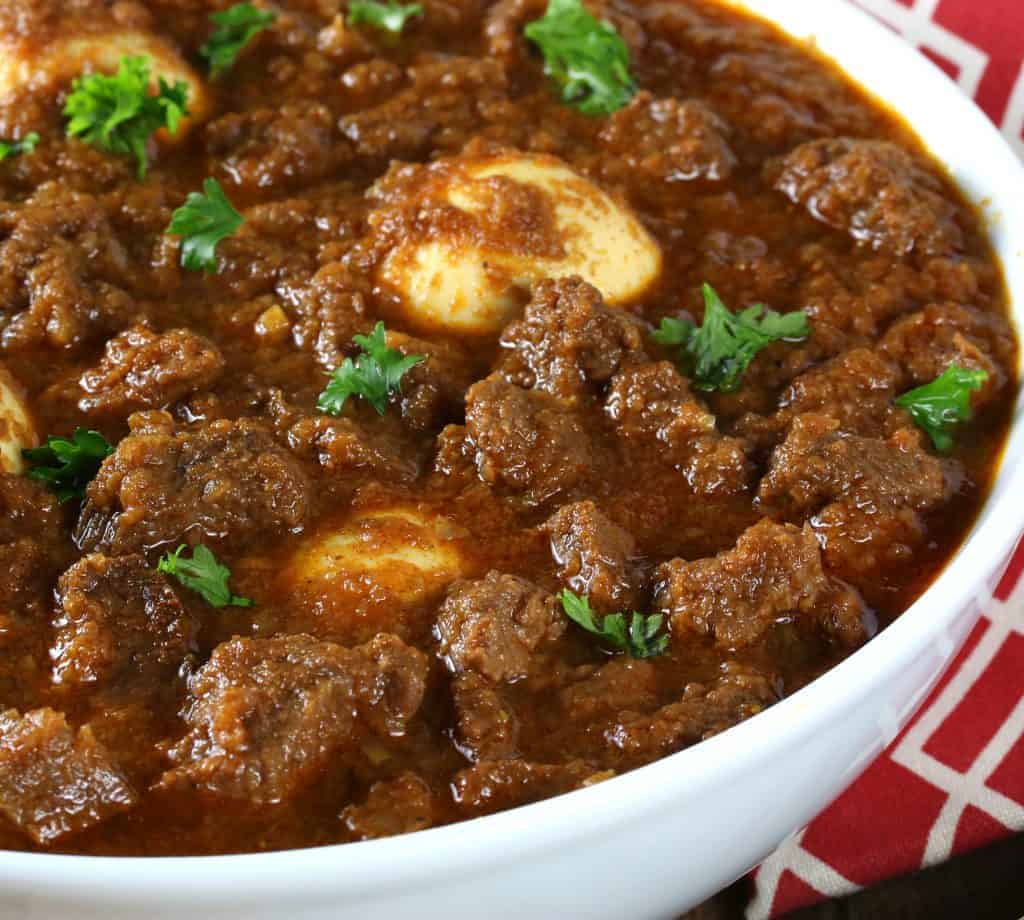
What is Sega Wat?
If you like African food you’ve most likely tried Doro Wat, the spicy chicken stew that Ethiopia embraces as its national dish. Another famous and equally delicious dish is Sega Wat, the beef version of this spicy stew. On restaurant menus you may find a couple of options – Key Sega Wat (spicy) and Alicha Sega Wat (mild). We’re making Sega Wat today and this one is middle of the road in its spiciness so you can add more heat if you prefer.
Sega Wat is traditionally eaten with injera, Ethiopia’s famous fermented flatbread. This spongy pancake-like flatbread is used in place of utensils to scoop the sega wat into your mouth and mop up any remaining bits of sauce.
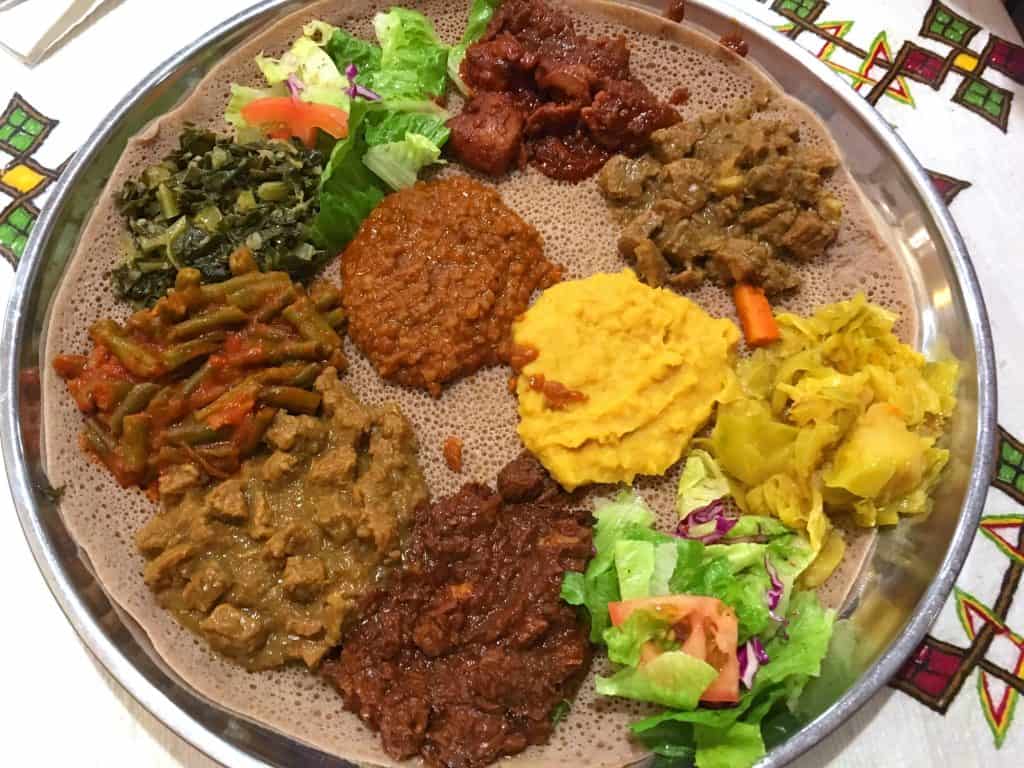
Key Ingredients
As with Doro Wat, the key to an excellent Sega Wat is using the best berbere you can find. Berbere is a fiery, bright red spice blend that Ethiopians pump up to such scorching levels love it’s a wonder they have any taste buds remaining. Most berbere you find outside of Africa is toned down in heat level and that suits me just fine.
The key to an excellent berbere is making it yourself with whole spices that are toasted and ground, which will give this dish maximum flavor. I highly recommend making your own – check out my homemade Berbere.
But if you do use store-bought berbere be sure to get a good amount of it because you’ll need 1/4-1/3 cup of it for this recipe alone. Keep it stored in an airtight glass jar in a dark place and it will keep for a while. Berbere also makes a great rub for meat, poultry, and fish, as well as a seasoning for stews, soups, and vegetables. It’s a great all-purpose spice, so you’ll be able to make good use of this bulk package if you decide to buy versus make your own. The best deal I’ve found for bulk berbere (and it also happens to be organic and a reputable brand) can be found HERE.
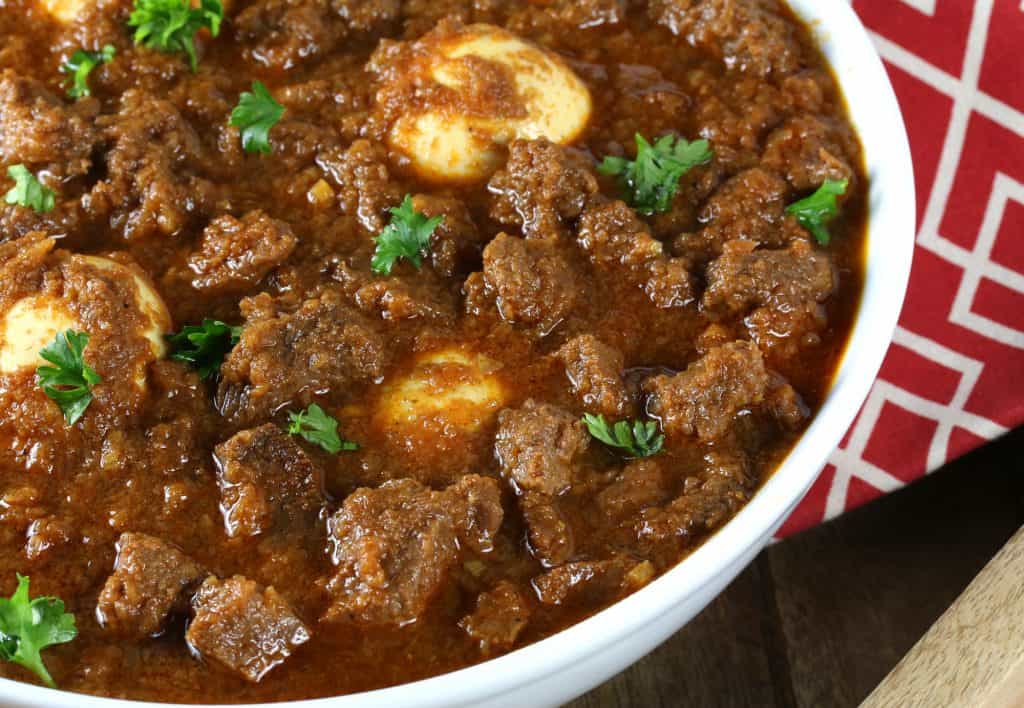
If you’ve never tried Sega Wat, your taste buds are in for a treat. The flavor of this Ethiopian stew is absolutely incredible. And as much as I love Doro Wat, I like Sega Wat even more – the beef adds a wonderfully deep and robust flavor and is sure to win you over!
Now that you’re equipped with Ethiopian berbere and Ethiopian injera, you’re ready to make one of Ethiopia’s most famous popular dishes, Sega Wat!

Sega Wat Recipe
Let’s get started!
Heat 3 tablespoons of niter kibbeh or butter in a heavy pot or Dutch oven. Add the onions and cook, covered, over low heat for 20 minutes, stirring occasionally.
Add the garlic, ginger, and 1 tablespoon niter kibbeh and continue to cook for another 10 minutes, stirring occasionally.
Add the berbere and the 2 remaining tablespoons of niter kibbeh and cook, covered, over low heat for another 10 minutes, stirring occasionally.
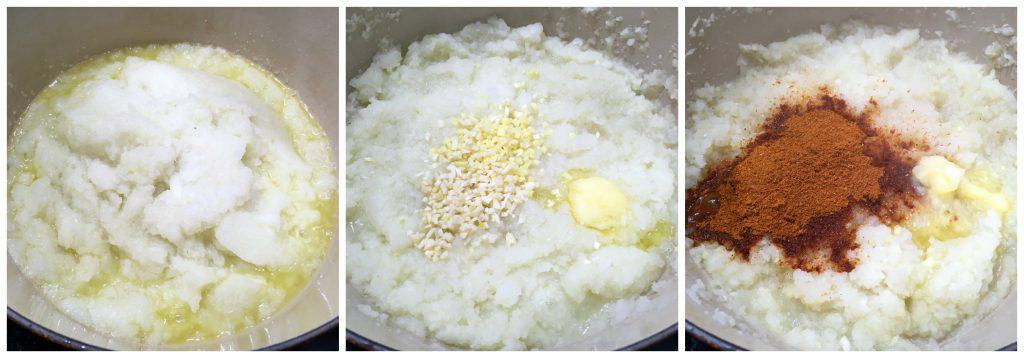
Add the beef, broth, salt and bring to a boil. Reduce the heat to low, cover, and simmer for 45 minutes, stirring occasionally.
Adjust the seasonings, adding more berbere according to taste and heat preference. Add the hard-boiled eggs and simmer on low heat, covered, for another 10 to heat through. Note, while eggs are an intrinsic addition to Doro Wat (the chicken version of this stew), they are not typically added to sega wat, but I personally love the addition.
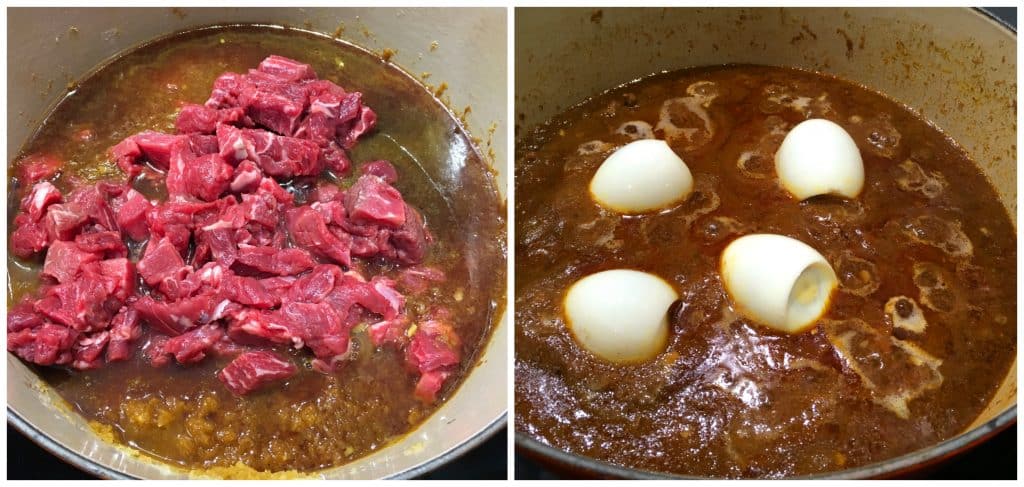
Half or quarter the eggs and arrange on the plates with the stew. Serve hot with Ethiopian injera, bread or rice.
*This stew is even better the next day after the flavors have had more time to meld.
Enjoy!

Be sure to also give my Doro Wat a try!
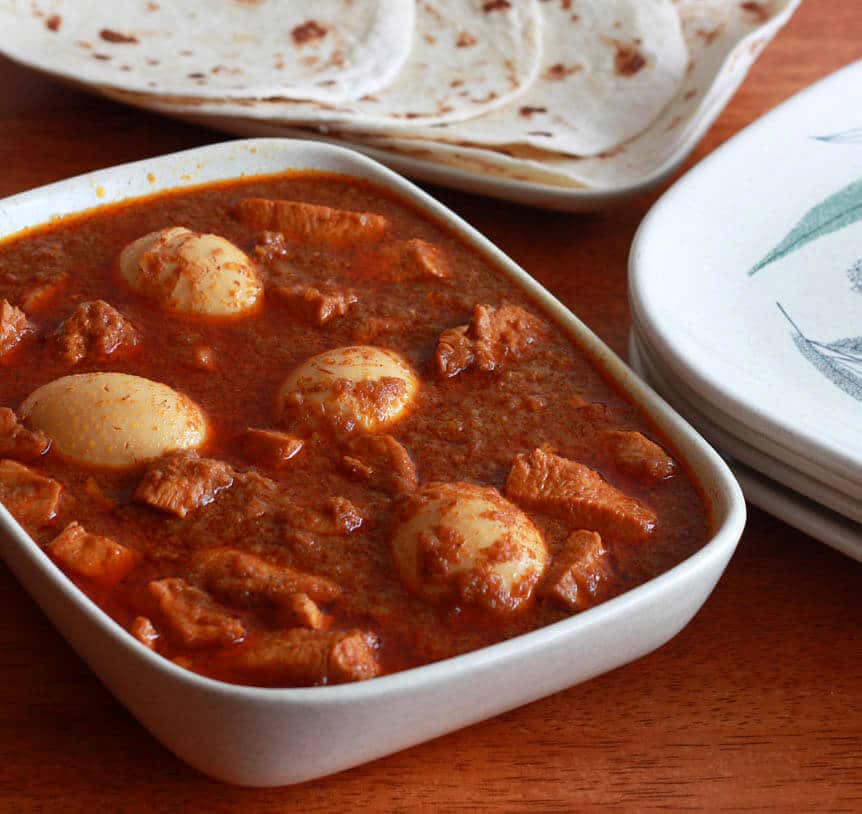
And grab the recipe for authentic homemade Ethiopian injera!
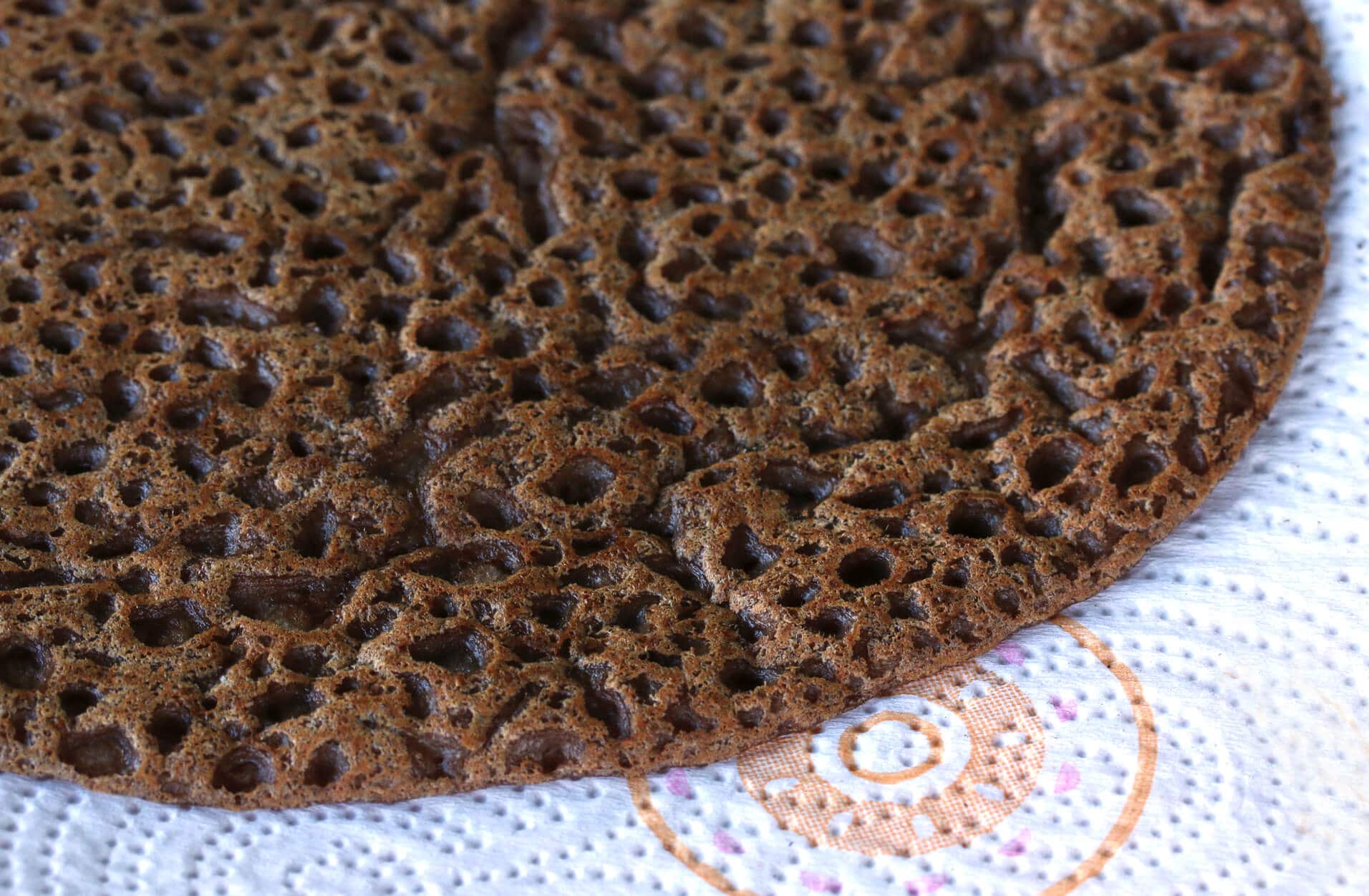
Save This Recipe

Sega Wat (Spicy Ethiopian Beef Stew)
Ingredients
- 2 pounds boneless beef chuck, cut into 1/2 inch cubes
- 6 tablespoons niter kibbeh , divided
- 3 cups chunky pureed onions (pulse in food processor to form a chunky paste)
- 1 1/2 tablespoons minced garlic
- 1 1/2 tablespoons minced fresh ginger
- 1/4 cup berbere spice blend
- Homemade Berbere Recipe ,HIGHLY recommended!
- 1 1/2 teaspoons salt
- 1 cup strong beef broth
- 4 hard-boiled eggs, shelled and pierced all over with a fork 1/4 inch deep (optional: traditionally added to doro wat, the chicken version of this stew, I like adding them to sega wat as well)
Instructions
- Heat 3 tablespoons of niter kibbeh or butter in a heavy pot or Dutch oven. Add the onions and cook, covered, over low heat for 20 minutes, stirring occasionally. Add the garlic, ginger, and 1 tablespoon niter kibbeh and continue to cook for another 10 minutes, stirring occasionally. Add the berbere and the 2 remaining tablespoons of niter kibbeh and cook, covered, over low heat for another 10 minutes, stirring occasionally. Add the beef, broth, salt and bring to a boil. Reduce the heat to low, cover, and simmer for 45-60 minutes, or until the beef is tender, stirring occasionally.
- Adjust the seasonings, adding more berbere according to taste and heat preference. Add the hard-boiled eggs and simmer on low heat, covered, for another 10 to heat through. Half or quarter the eggs and arrange on the plates with the stew. Serve hot with Ethiopian injera, bread or rice.*This stew is even better the next day after the flavors have had more time to meld.
Nutrition
Originally published on The Daring Gourmet February 16, 2018



















Hi there. I’m not able to eat eggs. Would omitting the eggs change the flavor profile too much?
Hi Pamela, the eggs don’t contribute a ton a flavor so it won’t change the flavor profile very much to omit them.
I have made this several times with stewing beef. I make it in a frying pan until adding beef. Heat the beef broth and throw it in a crock pot.
I serve with homemade Naan and raita for those who don’t like heat.( it’s slightly spicy) those who like spice add more barbere. Something for everyone with this now aftican Indian dish.( easier to find ingredients for Naan than ingera)
Yes, Hi There My Fellow Gastronaughts. You Can Usually Obtain All The More Unfamiliar Ingredients From Either Asian, Mediterranean, Or Turkish Food Supermarkets. I Hope That Helps You.
Is it possible to make a double batch and freeze this?
Absolutely, Margarita!
I’d love to try this – is it possible to use lamb instead of beef?
Absolutely, Sarah!
I chose this recipe to accompany the two lb elk roast I was given. I cooked it an additional 1 1/2hr and it was incredible!
That’s awesome, Karen, thanks so much for the feedback!
Made this last night! Amazing, smell and taste. I have never had this before, so I was wondering if the meat was the right consistency. It was still kind of ‘tough’, not like
for instance, the dutch hachee, which falls apart.. Is this supposed to be like that? only 45 min of cooking the meat, compared to a few hours for the hachee. Like I said, this was new to me, and it was delicious. I have made many recipes from your site, and it always turns out wonderful. Thank you.
Thank you, Linda, I’m so glad you enjoyed it! The tenderness will depend on factors like what kind of pot you’re using and the cooking temperature. If the beef is a little tough simply continue to simmer it until it’s tender.
AMAZINGGGGGGGG! TYSM FOR THE RECIPE
My absolute all time favorite single out recipe! I’ve been making it for 2 years now and at least once a month thank you for sharing it!
I’m so thrilled to hear that, Angie, thank you! :)
Soo good. I have tried to make this dish before (not the same recipe) the Niter Kibbeh makes all the difference!